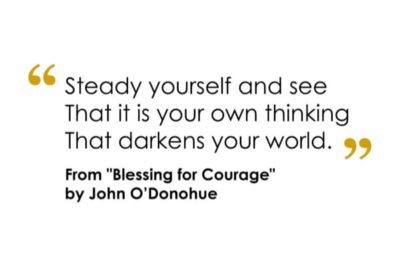How to Welcome and Work With Your Emotions
Mindfulness-based Emotional and Social Intelligence (MESI) is a training program we developed to enable our employees, clients, and community to hone the skills and practices that help them be fully present and act intentionally in their lives and relationships.
MESI invites us to use the challenges of everyday life as our fuel for becoming better human beings. Whatever these uncertain times hold for us, they also offer the opportunity to practice our MESI skills.
As we look to grow our MESI network, we want to share some of our favorite mindfulness practices. As with all MESI practices, you are the best judge of their effectiveness. We encourage you to give them a try.
The Practice
In this practice, we invite you to work with challenging emotions as they come up from time to time. We define a challenging emotion as any emotion that causes us to feel uneasy or unsettled.
These are emotions such as grief, anger, fear, frustration, anxiety, etc. that can disrupt our sense of calm.
Challenging emotions are a natural response to the enormous uncertainty we are currently facing as a society. Unfortunately, it is also natural for us to resist these emotions. By resisting, we provide ourselves with temporary comfort, but we create more suffering for ourselves in the long run. When it comes to emotions, that which we resist persists.
Challenging emotions can be physically painful. When they start to move through our bodies, we brace ourselves and tighten our muscles in the face of pain. As the emotion’s energy encounters resistance, its flow is slowed or even blocked. So instead of passing through the body freely in the 90 seconds or so that emotions naturally last, the challenging emotion is amplified and lingers for hours or even days.

You can think of this practice as learning to “stay in the fire.” That is precisely what it can feel like when a challenging emotion is showing up in your body. When we can stay in the fire and embrace the entirety of our experience, no matter how uncomfortable, we can maintain our agency and our ability to respond rather than react. Our default reaction to a challenging emotion is rarely optimal, and by resisting these emotions we are limiting our ability to choose our responses freely.
By choosing to stay in the fire, we allow ourselves to have and be with our emotions, instead of them having us. This is more than semantics. The part of us that is choosing to stay in the fire is the part of us that can maintain perspective, see the bigger picture, and find peace in even the most troubling circumstances.
Practicing staying in the fire will not only limit the suffering you experience in both the short and long run. It will also build your capacity to manage more challenging emotions in the future. You will become a calmer and more resilient person who responds rather than reacts to difficult emotions. Ultimately, you will experience more equanimity in the face of life’s most messy moments.
Practice I – Perfect for You: Reimagining Life’s Challenges as Opportunities





